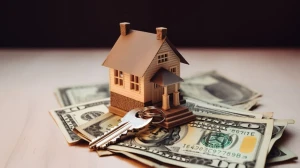
What is a Microloan? How to Apply Microloan?
A microloan is a small-business funding option, typically up to $50,000, tailored for startups and individuals with limited credit, serving as a financial lifeline for underserved communities and entrepreneurs in need of alternative financing solutions.
by Kowsalya
Published Aug 07, 2023 | Updated Dec 19, 2023 | 📖 5 min read
What is a Microloan?
A microloan is a small-dollar business loan typically ranging up to $50,000, designed for individuals and businesses facing challenges in qualifying for traditional financing. This type of funding is particularly suitable for startups, entrepreneurs with limited credit histories, and businesses in underserved communities, including those owned by women, minorities, and veterans.
Microloans are offered by various entities such as SBA intermediaries, the U.S. Department of Agriculture, nonprofit organizations, and peer-to-peer lenders. Repayment terms, interest rates, and eligibility criteria vary among microlenders, providing flexibility for borrowers with diverse financial situations.
What is SBA Microloan?
An SBA Microloan is a financial assistance program provided by the U.S. Small Business Administration (SBA) that offers small loans of up to $50,000 to help small businesses manage and expand their operations.
These microloans are intended to support businesses that may not have easy access to traditional financing from banks or other lending institutions. While the SBA funds the program, microloans are not directly disbursed by the SBA itself. Instead, they are processed, distributed, and managed by approved intermediaries, which are often nonprofit organizations and community lenders.
How to Apply Microloan?
To apply for an SBA microloan, start by understanding that these smaller-sized loans, capped at $50,000, are aimed at assisting small businesses and certain not-for-profit childcare centers. Begin by checking your eligibility, considering collateral requirements and personal guarantees. Identify the purpose of the microloan for your business needs, such as working capital, inventory, or equipment.
Research and connect with an SBA-approved intermediary lender in your area, and initiate the application process by submitting the required documentation. Once approved, carefully review the loan terms, including interest rates and repayment terms, and sign the agreement. After the agreement, funds will be disbursed to your business account, and you'll proceed with adhering to the agreed-upon repayment schedule. For any inquiries or assistance, reach out to your lender or the SBA loan servicing center.
At MarketsHost, we unravel the complexities of Loans, equipping you with the knowledge and tools needed to navigate the financial world with confidence.
How to Use SBA Microloan?
Using an SBA microloan involves several steps to ensure that the funds are used appropriately and in compliance with the loan terms. Here's a step-by-step guide on how to use an SBA microloan:
Understand the Purpose
Recognize that SBA microloans, capped at $50,000, aim to assist small businesses and not-for-profit childcare centers in their growth endeavors.
Identify Eligibility
Check eligibility criteria, as each SBA-approved intermediary lender may have specific requirements. Typically, for-profit businesses operating within the lender's approved area qualify.
Determine Loan Use
Clearly outline the purpose of the microloan, which can cover working capital, inventory, supplies, furniture, fixtures, machinery, or equipment. Note that it cannot be used to pay existing debts or purchase real estate.
Research Intermediary Lenders
Explore and connect with SBA-approved intermediary lenders in your area. The SBA provides a list of designated microlenders.
Initiate Application
Submit your microloan application to the chosen intermediary lender. Application requirements may vary, and lenders may request financial documentation about your business and personal finances.
Review Loan Terms
Once approved, carefully review the terms, including interest rates and repayment terms, set by the intermediary lender. Be aware of any associated fees such as packaging fees and closing costs.
Provide Collateral and Guarantee
Prepare to provide collateral, as intermediaries typically require it for security. Additionally, be ready to offer a personal guarantee, making you responsible in case of non-repayment.
Secure Funding
Upon agreement, funds will be disbursed to your business account. Ensure you adhere to the agreed-upon repayment schedule.
Inquiries and Assistance
For any inquiries or assistance, contact your lender directly or the SBA loan servicing center mentioned on your account statement.
What Are the Requirements for Obtaining an SBA Microloan?
To obtain an SBA microloan, you typically need to meet certain requirements set by the U.S. Small Business Administration and the intermediary lenders. Here are the key requirements:
For-Profit Business Status
You must operate as a for-profit business. Nonprofit child care centers may also qualify.
Credit Score
While the SBA does not specify a minimum credit score, a good credit history is generally favorable. Many lenders prefer a credit score of 620 or higher, although some may consider lower scores.
Time in Business
Startups and existing businesses are eligible. Some lenders may work with brand-new businesses, while others may require a minimum of two years in operation.
Location
Your business should operate within the approved area of the intermediary lender. Some microlenders may only serve specific communities or regions.
Personal and Business Finances
Provide personal and business financial documentation, including personal tax returns (at least two years), recent pay stubs, business tax returns, balance sheets, income statements, cash flow projections, and information on existing debts.
Collateral
Collateral is often required to secure the microloan. This can include business assets, equipment, or other valuable items.
Eligibility for Underserved Businesses
The microloan program is designed to support traditionally underserved businesses, including startups, women-owned companies, and businesses located in low-income communities.
Positive Cash Flow
Lenders may want to see a positive cash flow or positive cash flow projections to ensure your business's financial stability.
No Disbarment
Ensure that you are not disbarred from receiving federal funds.
Complete Application Process
Submit a comprehensive application to an SBA-approved intermediary lender, including personal identification, business license, business plan, and other required documents.
What Are the Pros and Cons of Microloans?
Pros of Microloans
- Microloans are easier to get, especially for startups and businesses with poor credit.
- They're designed for women, minorities, veterans, and those in low-income areas.
- Many microlenders offer reasonable interest rates.
- Microlenders often provide free training and coaching.
Cons of Microloans
- You can't get large sums; they're best for small needs.
- Interest rates might be higher than traditional loans.
- You need to pay back quickly, which can be tough.
- Not all places have microlenders; options may be limited.
- can take a while to get the money compared to faster online loans.
What is a Microloan - FAQs
1. What is the maximum loan amount for an SBA microloan?
The maximum loan amount for an SBA microloan is $50,000.
2. Are microloans available only for startups?
No, microloans are available for both startups and existing small businesses.
3. What is the typical interest rate for an SBA microloan?
The interest rates for SBA microloans generally range from 2.25% to 18%.
4. Can microloans be used to pay off debts?
No, microloan funds cannot be used to pay off debts.
5. How long does it take to receive the funds after loan approval?
The funds are typically disbursed within a few days to a few weeks after loan approval.
6. Is collateral required for SBA microloans?
Yes, microlenders may require collateral to secure the microloan.




